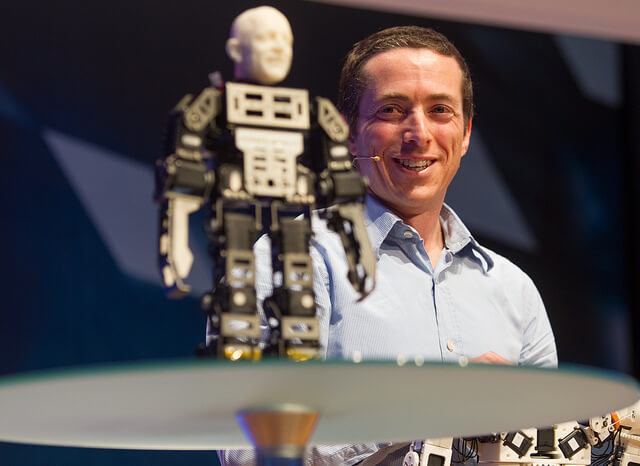20 minutes into my first meeting with Limor Schweitzer, the founder of MOV.AI, I already knew this is going to be my next investment. I have been struggling with myself over the past few months about whether my past experience in enterprise software is still going to be relevant 10 years from now. For some time now, we have made Robotics and Workforce Automation one of our major investment theses for our newly raised fifth fund, but we kept looking for the right investment that would combine true innovation and fresh thinking with our past experience so when the opportunity came to make a pure software investment in a Robotics world, it was too good to pass up.
What Limor presented was very compelling: 800 million jobs are going to be replaced with robots by 2030 according to recent McKinsey & Co. research, he said, combined with a significant decrease in the cost of robotic arms and other hardware components. And yet, the software stack for Robotics was still lagging far behind.
Most large Robotics manufacturers are using proprietary software – basically re-inventing the wheel every time – rewriting drivers to operate the sensors and hard-coding general commands and procedures which are common to many robots. Startups and other innovative companies are using Android as their basis for software coding but android was built for mobile phone, which may be great at interacting with passive sensors, but it completely lacks the ability to provide commands to arms or wheels and to make navigation decisions.
What MOV.AI proposed was so obvious, I kept asking myself – how come it was never done before? An Operating System which will be the basis for the software stacks to all robots in the world, that will provide drivers to all sensors and arms and have an intuitive and simple user interface to write specific applications. This would basically allow the decoupling of software from hardware in the Robotics space and will lower the bar for new player to enter the market, thus, stimulating innovation and speeding up adoption.
For some time, the academic world has been using a software framework called ROS (Robotics Operating System) but apparently this framework is very far from providing a commercial solution. Our operating system will have to be ROS compatible, as this is the language that many Robotics engineers speak, but we would need to develop the basics from scratch.
During the due diligence we discovered that it was actually not so easy to “productize” it. For one thing, robots (specifically those that operate within a human environment) have very high standards of safety and reliability. Also, connecting robots to work as a synchronized fleet requires real time communication and poses a significant cybersecurity threat, and the list goes on.
It is not an easy task to monetize and commercialize software infrastructure these days, especially those based on exiting open source as their basis. We have done it successfully in the past at Viola, with companies like Zend, Perfecto, Redis Labs and Codefresh, and MOV.AI is our latest addition to this respectable cluster.
Limor brings more than 12 years of experience in the Robotics world and know the ins and outs if this industry, which is very unique and different and has its own way of looking at technology, evaluating it and acquiring it.
Our investment committee concluded that “the world needs an operating system for Robotics, and MOV.AI’s team has the highest chance of delivering it”. This is definitely not our last investment in the space of Robotics and Workforce Automation and we intend to make 2-3 additional investments in the space in the coming years
We are thrilled to join this investment together with Gigi Levy and our co-investors from NFX and would like to welcome the MOV.AI team to the Viola family.

Limor Schweitzer, Founder & CEO of MOV.AI with “Fonzie”





